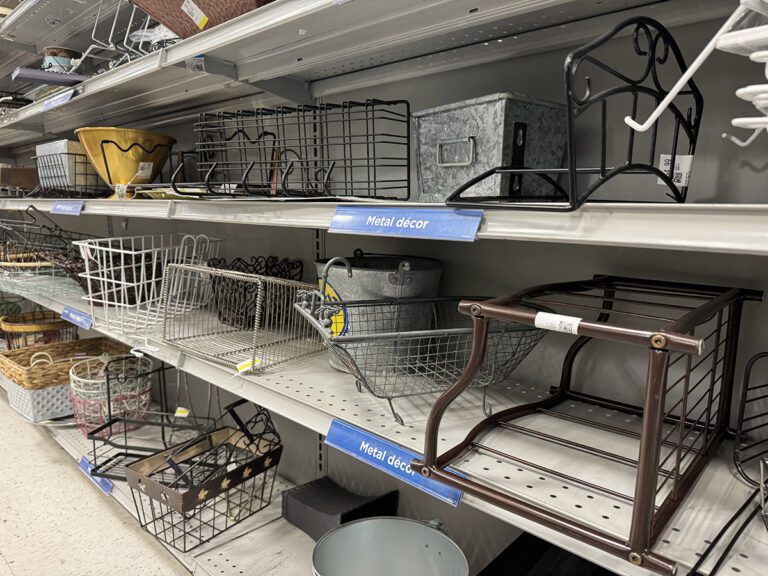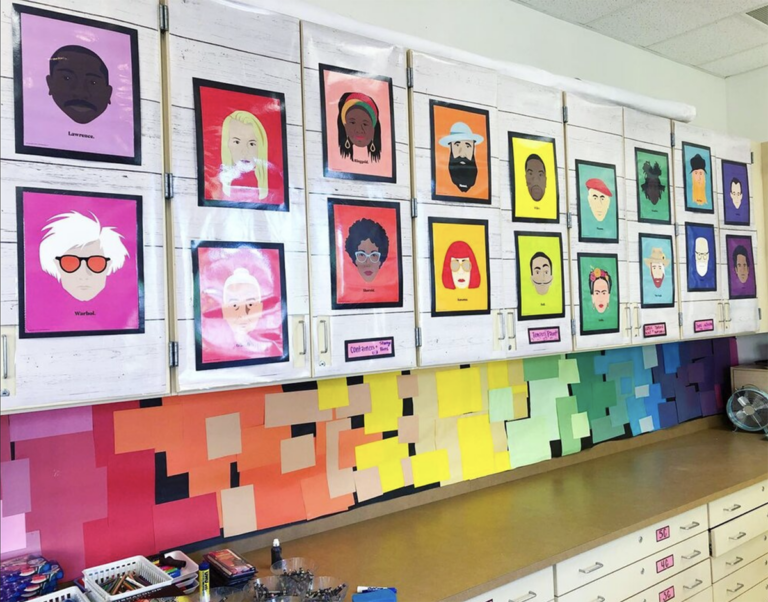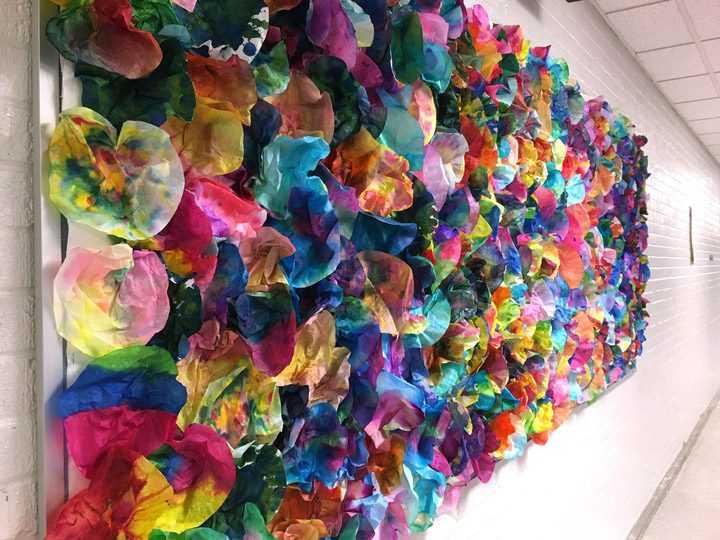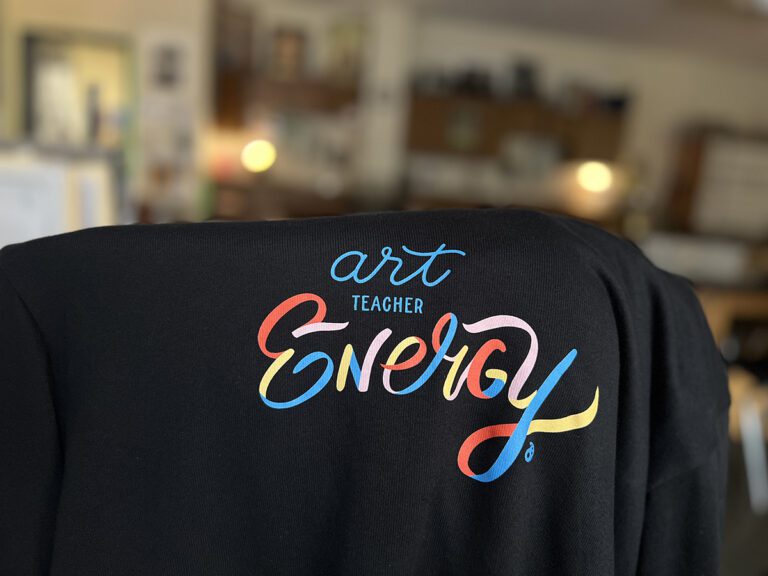In an art room, wall space is limited. You might use yours for visuals, anchor charts, interactive displays, and more.
With many administrators asking for things like “I Can” statements, Student Learning Objectives, and vocabulary words to be posted at all times, what’s an art teacher to do?
Here’s a clever solution to create one vocab wall for all your students.
The answer is good old-fashioned color coding.
Here’s what to do.
1. Assign a color to each grade level you teach.
Using rainbow order makes things simple.
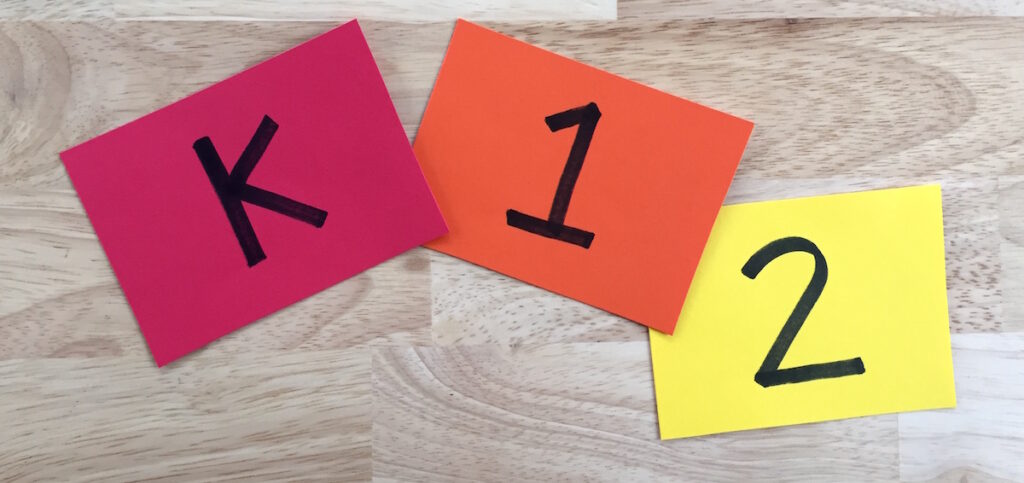
2. Assign words to each grade level.
Think about all the words you want your students to know before leaving your classroom. Include simpler words and concepts for your younger students and build on those words until you arrive at the most complex words for your oldest students.
For example, when thinking about words related to color theory, you might assign “Primary Colors” to kindergarten, “Secondary Colors” to first grade, and “Neutral Colors” to second grade.
3. Create color-coded vocabulary cards.
Using the color scheme of your choice, create your cards. For example, you might make kindergarten cards red, first-grade cards orange, second-grade cards yellow, etc.
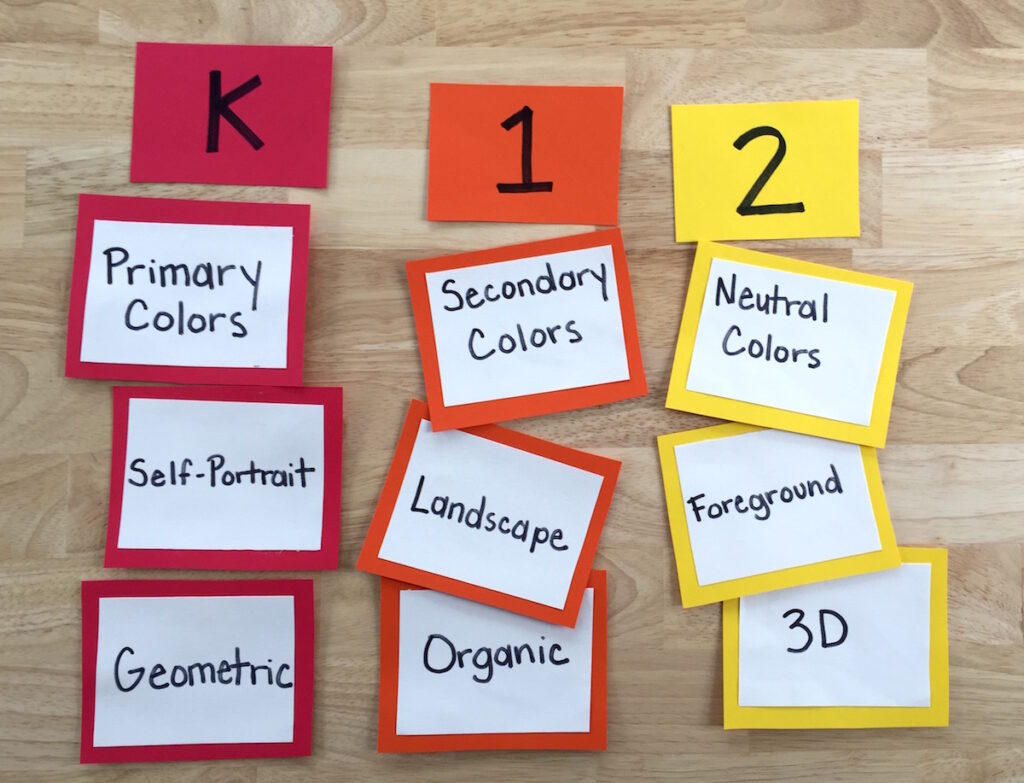
4. Display the cards in a progression.
Once finished, display your words from simplest to most complex. Then, explain to students they will learn all the words in their color group, plus all the words in the groups which precede them, but NOT the words in the groups that come after them.
So, in this example, kindergartners would only learn red words, but second graders would learn red, orange, and yellow words.
This method can work for any number of grade and age levels. Give it a try to save yourself some space and some sanity!
Do you display vocabulary words in your room? How do you do it?
What else are you required to post in your classroom?
Magazine articles and podcasts are opinions of professional education contributors and do not necessarily represent the position of the Art of Education University (AOEU) or its academic offerings. Contributors use terms in the way they are most often talked about in the scope of their educational experiences.


